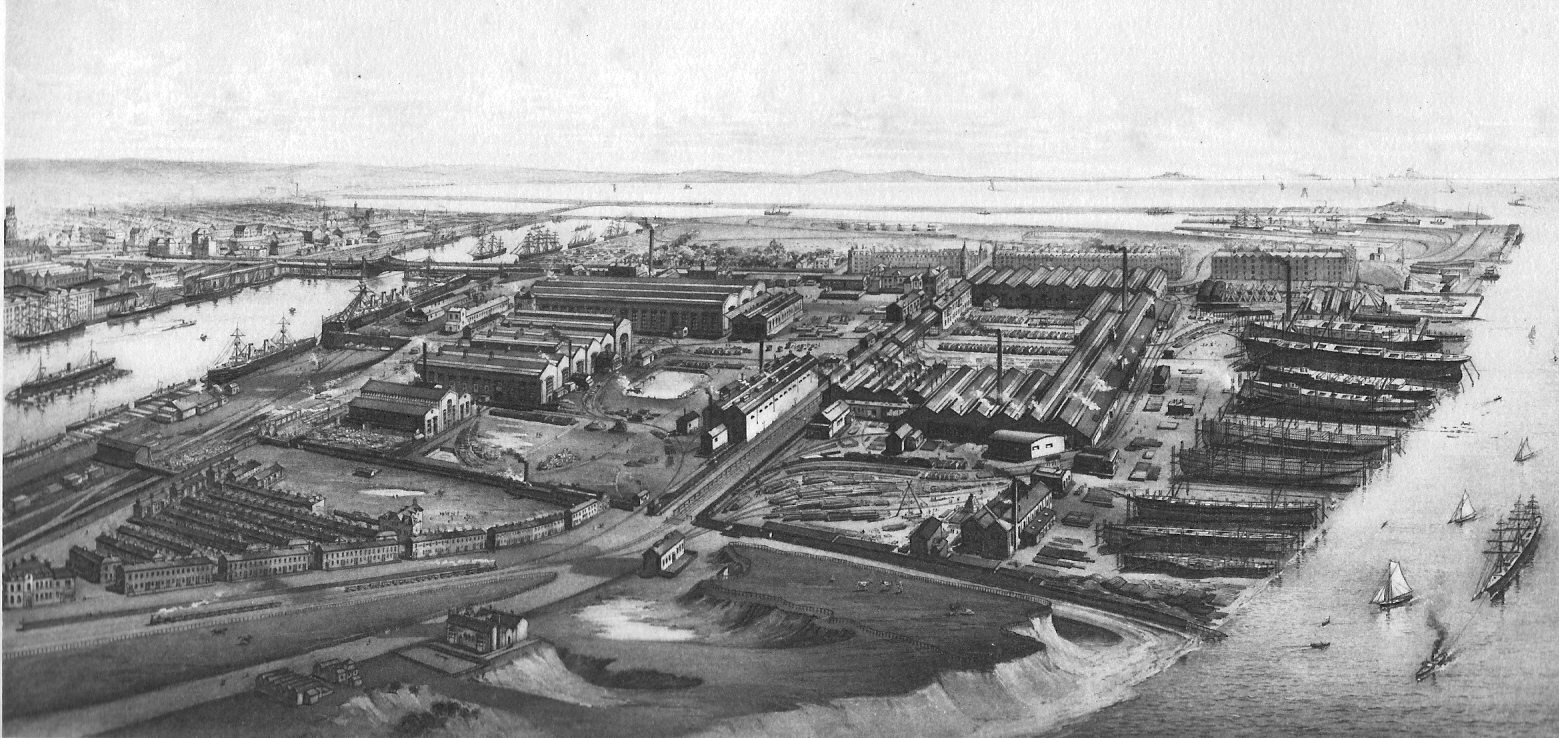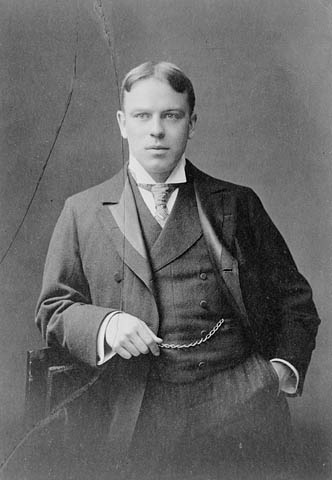|
RMS Empress Of China (1890)
RMS ''Empress of China'' was an ocean liner built in 1890-1891 by Naval Construction & Armament Co., Barrow, England for Canadian Pacific Steamships (CP). This ship—the first of three CP vessels to be named ''Empress of China''—regularly traversed the trans-Pacific route between the west coast of Canada and the Far East until she struck an underwater reef and sank in Tokyo harbour in 1911.Ship List Description of ''Empress of China'' Royal Mail Ship In 1891, Canadian Pacific Railway (CPR) and the British government reached agreement on a contract for subsidized mail service between Britain and Hong Kong via Canada; and the route began to be serviced by three specially designed ocean liners. Each of these three vessels was given an Imperial name.Miller, William H. (1984). ''The First Great Ocean Liners in Photographs,'' p. 52. ''Empress of China'' and her two running mates, RMS ''Empress of India'' and RMS ''Empress of Japan'', created a flexible foundation ... [...More Info...] [...Related Items...] OR: [Wikipedia] [Google] [Baidu] |
Canadian Pacific Railway
The Canadian Pacific Railway (french: Chemin de fer Canadien Pacifique) , also known simply as CPR or Canadian Pacific and formerly as CP Rail (1968–1996), is a Canadian Class I railway incorporated in 1881. The railway is owned by Canadian Pacific Railway Limited, which began operations as legal owner in a corporate restructuring in 2001. Headquartered in Calgary, Alberta, the railway owns approximately of track in seven provinces of Canada and into the United States, stretching from Montreal to Vancouver, and as far north as Edmonton. Its rail network also serves Minneapolis–St. Paul, Milwaukee, Detroit, Chicago, and Albany, New York, in the United States. The railway was first built between eastern Canada and British Columbia between 1881 and 1885 (connecting with Ottawa Valley and Georgian Bay area lines built earlier), fulfilling a commitment extended to British Columbia when it entered Confederation in 1871; the CPR was Canada's first transcontinental railway. ... [...More Info...] [...Related Items...] OR: [Wikipedia] [Google] [Baidu] |
Liverpool
Liverpool is a city and metropolitan borough in Merseyside, England. With a population of in 2019, it is the 10th largest English district by population and its metropolitan area is the fifth largest in the United Kingdom, with a population of 2.24 million. On the eastern side of the Mersey Estuary, Liverpool historically lay within the ancient hundred of West Derby in the county of Lancashire. It became a borough in 1207, a city in 1880, and a county borough independent of the newly-created Lancashire County Council in 1889. Its growth as a major port was paralleled by the expansion of the city throughout the Industrial Revolution. Along with general cargo, freight, and raw materials such as coal and cotton, merchants were involved in the slave trade. In the 19th century, Liverpool was a major port of departure for English and Irish emigrants to North America. It was also home to both the Cunard and White Star Lines, and was the port of registry of the ocean li ... [...More Info...] [...Related Items...] OR: [Wikipedia] [Google] [Baidu] |
CP Ships
CP Ships was a large Canadian shipping company established in the 19th century. From the late 1880s until after World War II, the company was Canada's largest operator of Atlantic and Pacific steamships. Many immigrants travelled on CP ships from Europe to Canada. The sinking of the steamship just before World War I was the largest maritime disaster in Canadian history. The company provided Canadian Merchant Navy vessels in World Wars I and II. Twelve vessels were lost due to enemy action in World War II, including the , which was the largest ship ever sunk by a German U-boat. The company moved to a model of container shipping from passenger, freight and mail service in the 1960s due to competitive pressure from the airline industry. The company was a part of the Canadian Pacific Ltd. conglomerate. It was spun out as a separate company in 2001. In 2005, it was purchased by TUI AG and is now part of the company's Hapag-Lloyd division. The Atlantic and Pacific passenger line ... [...More Info...] [...Related Items...] OR: [Wikipedia] [Google] [Baidu] |
Clydebank
Clydebank ( gd, Bruach Chluaidh) is a town in West Dunbartonshire, Scotland. Situated on the north bank of the River Clyde, it borders the village of Old Kilpatrick (with Bowling, West Dunbartonshire, Bowling and Milton, West Dunbartonshire, Milton beyond) to the west, and the Yoker and Drumchapel areas of the adjacent Glasgow, City of Glasgow immediately to the east. Depending on the definition of the town's boundaries, the suburban areas of Duntocher, Faifley and Hardgate either surround Clydebank to the north, or are its northern outskirts, with the Kilpatrick Hills beyond. Shires of Scotland, Historically part of Dunbartonshire and founded as a police burgh on 18 November 1886, Clydebank is part of the registration County of Dumbarton, the Dunbartonshire Lord Lieutenant, Crown Lieutenancy area, and the wider urban area of Greater Glasgow. History Early origins Clydebank is located within the historical boundaries of the ancient Kingdom of Strathclyde, the Mormaerdom of Lenno ... [...More Info...] [...Related Items...] OR: [Wikipedia] [Google] [Baidu] |
Hamburg-America Line
The Hamburg-Amerikanische Packetfahrt-Aktien-Gesellschaft (HAPAG), known in English as the Hamburg America Line, was a transatlantic shipping enterprise established in Hamburg, in 1847. Among those involved in its development were prominent citizens such as Albert Ballin (Director General), Adolph Godeffroy, Ferdinand Laeisz, Carl Woermann, August Bolten, and others, and its main financial backers were Berenberg Bank and H. J. Merck & Co. It soon developed into the largest German, and at times the world's largest, shipping company, serving the market created by German immigration to the United States and later, immigration from Eastern Europe. On 1 September 1970, after 123 years of independent existence, HAPAG merged with the Bremen-based North German Lloyd to form Hapag-Lloyd AG. History Ports served In the early years, the Hamburg America Line exclusively connected European ports with North American ports, such as Hoboken, New Jersey, or New Orleans, Louisiana. With tim ... [...More Info...] [...Related Items...] OR: [Wikipedia] [Google] [Baidu] |
Stettin
Szczecin (, , german: Stettin ; sv, Stettin ; Latin language, Latin: ''Sedinum'' or ''Stetinum'') is the capital city, capital and largest city of the West Pomeranian Voivodeship in northwestern Poland. Located near the Baltic Sea and the Poland-Germany border, German border, it is a major port, seaport and Poland's seventh-largest city. As of December 2021, the population was 395,513. Szczecin is located on the river Oder, south of the Szczecin Lagoon and the Bay of Pomerania. The city is situated along the southwestern shore of Dąbie Lake, on both sides of the Oder and on several large islands between the western and eastern branches of the river. Szczecin is adjacent to the Police, West Pomeranian Voivodeship, town of Police and is the urban centre of the Szczecin agglomeration, an extended metropolitan area that includes communities in the States of Germany, German states of Brandenburg and Mecklenburg-Western Pomerania. Szczecin is the administrative and industrial cen ... [...More Info...] [...Related Items...] OR: [Wikipedia] [Google] [Baidu] |
RMS Empress Of Australia (1919)
RMS ''Empress of Australia'' was an ocean liner built in 1913–1919 by Vulcan AG shipyard in Stettin, Germany (now Szczecin, Poland) for the Hamburg America Line.Haworth, R.BMiramar Ship Index She was refitted for ; and the ship – the third of three CP vessels to be named ''Empress of China'' – was renamed yet again in 1922 as ''Empress of Australia.''Ship List Description of ''Empress of Australia'' In ... [...More Info...] [...Related Items...] OR: [Wikipedia] [Google] [Baidu] |
Bōsō Peninsula
The is a peninsula that encompasses the entirety of Chiba Prefecture on Honshu, the largest island of Japan. It is part of the Greater Tokyo Area. It forms the eastern edge of Tokyo Bay, separating it from the Pacific Ocean. The peninsula covers approximately . Description The Bōsō Peninsula is defined by the Pacific Ocean to its east and south, Tokyo Bay to the west, and the Edo and Tone rivers to the north. The Bōsō Hill Range forms the backbone of the south of the peninsula, and much of the area is hilly. Mount Atago in Minamibōsō and Kamogawa is the highest point on the peninsula with an altitude of . From south to north the Bōsō Hill Range gives way to the Shimōsa Plateau, which covers much of the area of northern Chiba Prefecture, and ends in the lower areas around the Tone River. The northern and western parts of the Bōsō Peninsula are highly urbanized. The Shimōsa Plateau and the coastal lowlands and interior river valleys are chiefly used for rice cultiv ... [...More Info...] [...Related Items...] OR: [Wikipedia] [Google] [Baidu] |
Nojimazaki Lighthouse
is a lighthouse located at the southern tip of the Bōsō Peninsula, in the city of Minamibōsō, Chiba Prefecture Japan. History The Nojimazaki Lighthouse was one of eight lighthouses to be built in Meiji period Japan under the provisions of the Anglo-Japanese Treaty of Amity and Commerce of 1858, signed by the Bakumatsu period Tokugawa Shogunate. The lighthouse was designed and constructed by French engineer Léonce Verny, and is noteworthy in that it is the second lighthouse to be completed in Japan, after the Kannonzaki Lighthouse on the opposing entrance to Tokyo Bay. As completed, the whitewashed octagonal brick structure stood high, and had a first-order Fresnel lens, with a kerosene light source. The lighthouse was first lit on January 19, 1869. During the 1923 Great Kantō earthquake, the top eight meters of the structure collapsed. It was rebuilt in concrete, and recommissioned on August 15, 1925. The structure was again damaged in 1945 by bombardment by the United S ... [...More Info...] [...Related Items...] OR: [Wikipedia] [Google] [Baidu] |
Tokyo Bay
is a bay located in the southern Kantō region of Japan, and spans the coasts of Tokyo, Kanagawa Prefecture, and Chiba Prefecture. Tokyo Bay is connected to the Pacific Ocean by the Uraga Channel. The Tokyo Bay region is both the most populous and largest industrialized area in Japan. Names In ancient times, Japanese knew Tokyo Bay as the . By the Azuchi–Momoyama period (1568–1600) the area had become known as after the city of Edo. The bay took its present name in modern times, after the Imperial court moved to Edo and renamed the city Tokyo in 1868. Geography Tokyo Bay juts prominently into the Kantō Plain. It is surrounded by the Bōsō Peninsula in Chiba Prefecture to the east and the Miura Peninsula in Kanagawa Prefecture to the west. The shore of Tokyo Bay consists of a diluvial plateau and is subject to rapid marine erosion. Sediments on the shore of the bay make for a smooth, continuous shoreline. Boundaries In a narrow sense, Tokyo Bay is the area north of ... [...More Info...] [...Related Items...] OR: [Wikipedia] [Google] [Baidu] |
William Lyon Mackenzie King
William Lyon Mackenzie King (December 17, 1874 – July 22, 1950) was a Canadian statesman and politician who served as the tenth prime minister of Canada for three non-consecutive terms from 1921 to 1926, 1926 to 1930, and 1935 to 1948. A Liberal, he was the dominant politician in Canada from the early 1920s to the late 1940s. King is best known for his leadership of Canada throughout the Great Depression and the Second World War. He played a major role in laying the foundations of the Canadian welfare state and established Canada's international reputation as a middle power fully committed to world order. With a total of 21 years and 154 days in office, he remains the longest-serving prime minister in Canadian history. Born in Berlin, Ontario (now Kitchener), King studied law and political economy in the 1890s and became concerned with issues of social welfare. He later obtained a PhD – the only Canadian prime minister to have done so. In 1900, he became deputy minister ... [...More Info...] [...Related Items...] OR: [Wikipedia] [Google] [Baidu] |








